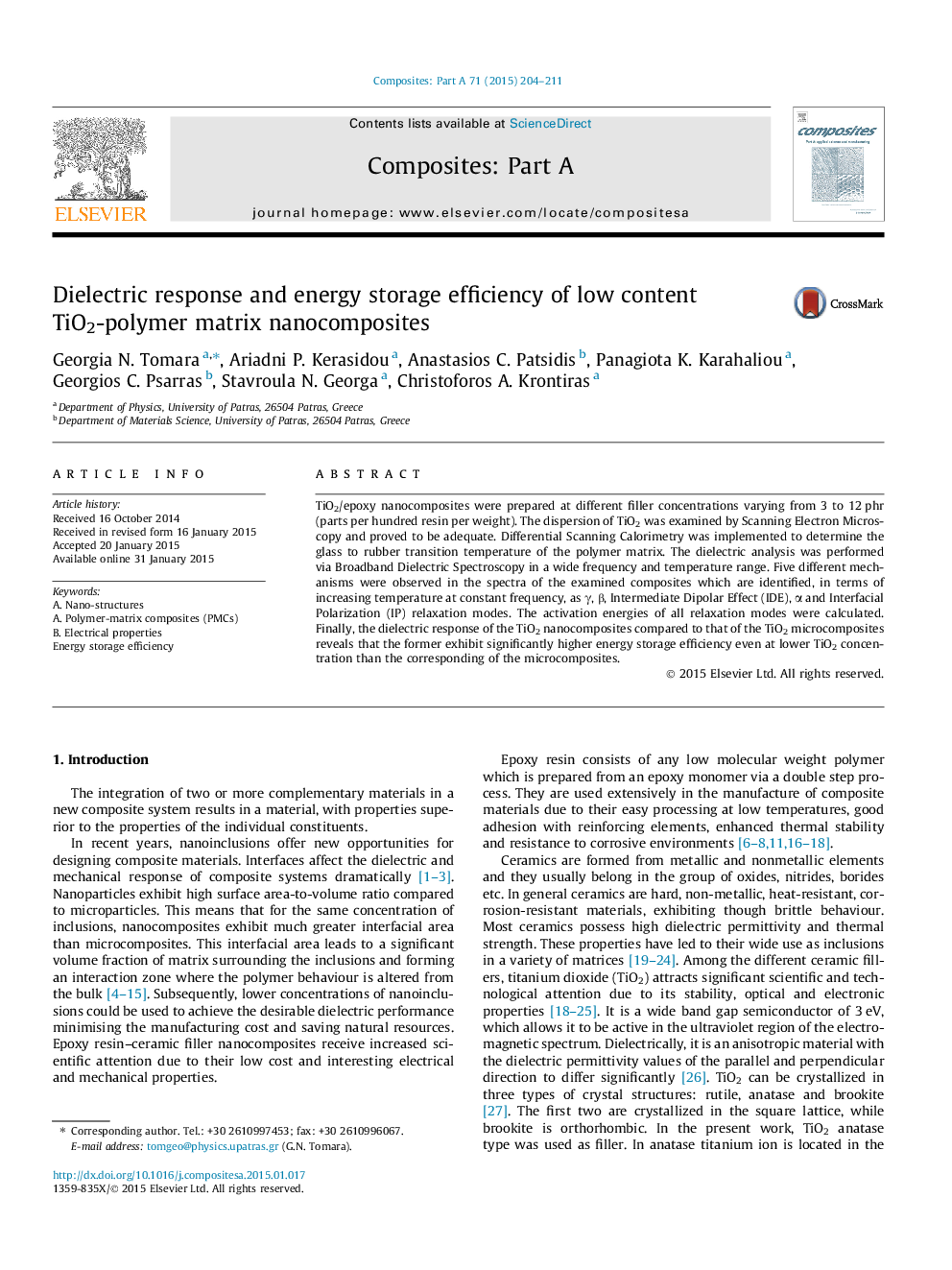| Article ID | Journal | Published Year | Pages | File Type |
|---|---|---|---|---|
| 1465877 | Composites Part A: Applied Science and Manufacturing | 2015 | 8 Pages |
TiO2/epoxy nanocomposites were prepared at different filler concentrations varying from 3 to 12 phr (parts per hundred resin per weight). The dispersion of TiO2 was examined by Scanning Electron Microscopy and proved to be adequate. Differential Scanning Calorimetry was implemented to determine the glass to rubber transition temperature of the polymer matrix. The dielectric analysis was performed via Broadband Dielectric Spectroscopy in a wide frequency and temperature range. Five different mechanisms were observed in the spectra of the examined composites which are identified, in terms of increasing temperature at constant frequency, as γ, β, Intermediate Dipolar Effect (IDE), α and Interfacial Polarization (IP) relaxation modes. The activation energies of all relaxation modes were calculated. Finally, the dielectric response of the TiO2 nanocomposites compared to that of the TiO2 microcomposites reveals that the former exhibit significantly higher energy storage efficiency even at lower TiO2 concentration than the corresponding of the microcomposites.
